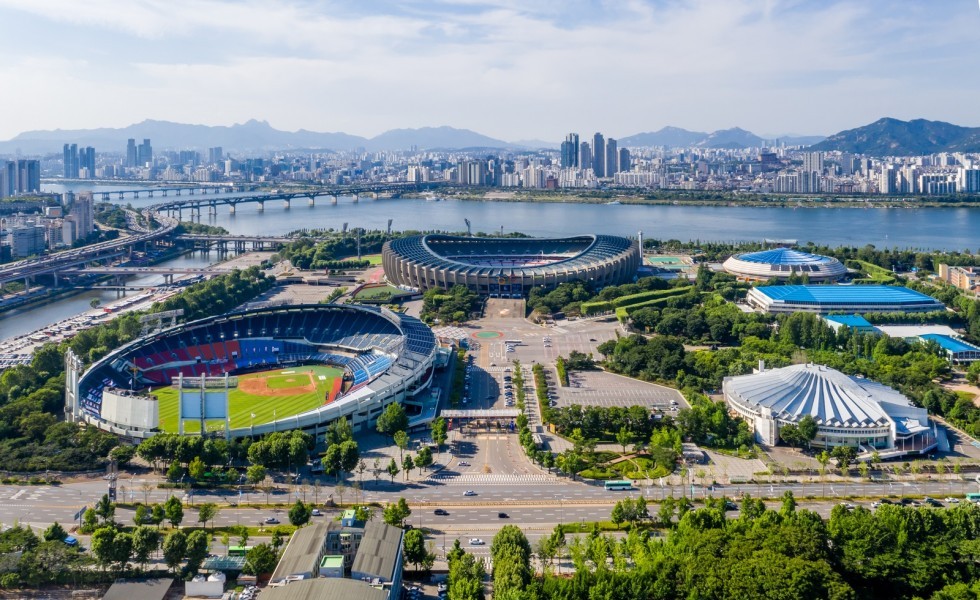Search for cities, countries, lakes and rivers
South Korea

South Korea © By Seoul Institute
South Korea Sea Temperature
This page provides detailed information about the water temperature in South Korea. All countries, cities and resorts on the coast. The range of sea temperatures for today. We find every spot where you can swim and tell you what the water temperature is there today and throughout the year.
Current Sea Temperature
16.7°C
minimal
19.0°C
average
21.8°C
maximum
Graph of Sea Temperature Changes in South Korea Over the Last 60 Days
The Warmest Places on the Seaside in South Korea Today
The Most Popular Seaside Resorts in South Korea
Seas and Oceans that Border South Korea
Water Temperature in South Korea: General Trends and Swimming Opportunities
South Korea, located on the eastern edge of the Asian continent, has a temperate climate, which affects the temperature of its surrounding seas. The sea temperatures along the country's coast typically range from 5°C (41°F) in the winter to 26°C (79°F) in the summer. The warmest months for swimming are generally from June to August, when the waters along the southern coast and the popular beaches on Jeju Island reach their peak temperatures, offering ideal conditions for swimming and beach activities.
South Korea is known for its beautiful beaches, particularly on the southern coast and around Jeju Island. The beaches in places like Haeundae in Busan, Sokcho on the eastern coast, and Jeju Island's many shores attract both locals and tourists looking for a summer retreat. These areas provide calm waters, especially during the summer months, which makes swimming, snorkeling, and even water sports like windsurfing and jet skiing highly popular. The beaches also offer a variety of facilities, including well-maintained swimming areas, making them perfect for a family day by the sea.
In addition to swimming, South Korea’s coastal areas provide opportunities for diving, with Jeju Island being a top spot for exploring underwater life. The waters around the island are known for their rich marine biodiversity, and divers can enjoy encounters with colorful fish, coral reefs, and other sea creatures. For those seeking a more relaxed beach experience, the scenic coastline and the warm, calm waters offer a perfect backdrop for sunbathing and leisurely swims. Whether you’re looking to dive into vibrant underwater ecosystems or enjoy a peaceful swim, South Korea’s beaches offer diverse opportunities for ocean lovers.
General Information and Geographical Location of South Korea
Original name of the country: Daehanminguk
South Korea is located in Asia. The country is washed by two seas, such as the East China Sea, the Yellow Sea. South Korea - has a fairly long coastline. To determine the temperature of the water in it, we track 24 settlements and resorts. Link to Google Maps.
South Korea Weather
South Korea has a temperate climate with four distinct seasons, ranging from hot summers to cold winters. Summers, from June to August, are hot and humid, with temperatures typically ranging from 75–95°F (24–35°C). This period also brings the monsoon season, known as jangma, which results in heavy rainfall, especially in July. Winters, from December to February, are cold and dry, with temperatures in northern regions often dropping below 20°F (-7°C), while southern areas, like Busan and Jeju Island, remain milder, around 30–45°F (-1–7°C). Snowfall is common in the northern and central regions, particularly in Seoul and the mountainous areas.
Spring (March to May) and autumn (September to November) are the most pleasant seasons, with mild temperatures ranging from 50–75°F (10–24°C) and lower humidity. Autumn, in particular, is known for its clear skies and colorful foliage, making it a popular time for outdoor activities. In contrast, spring brings blooming cherry blossoms but also occasional yellow dust storms from China, which can affect air quality. The coastal regions experience slightly more moderate temperatures due to the influence of the ocean, but overall, South Korea's climate offers a clear variation between seasons.
Frequently Asked Questions About South Korea and its Water Temperatures
What is the sea temperature today on the coast of South Korea?
The sea temperature today on the coast of South Korea ranges from from 62°F (16.7°C) in Yongpyong to 71°F (21.8°C) in Busan.
Which seas and oceans border South Korea?
South Korea has access to two seas: the East China Sea and the Yellow Sea.
How long is the coastline in South Korea?
According to The World Factbook, the length of South Korea's coastline is 1,499 miles (2,413 km), while the World Resources Institute estimates it at 7,753 miles (12,478 km).
What is the best time for swimming and beach holidays on the coast of South Korea?
The coastline of South Korea is quite extensive, so the sea temperature varies significantly. However, if we talk about average values, there are three months in a year when you can comfortably swim in the sea: July, August and September. During this time, the average water temperature is always above 68 degrees Fahrenheit (20 degrees Celsius).
What is the sea temperature history in South Korea?
Here are the ranges of sea temperatures in South Korea by month based on historical data: in January from 30°F (-1°C) to 60°F (16°C), in February from 33°F (1°C) to 59°F (15°C), in March from 32°F (0°C) to 60°F (16°C), in April from 39°F (4°C) to 64°F (18°C), in May from 46°F (8°C) to 68°F (20°C), in June from 55°F (13°C) to 75°F (24°C), in July from 60°F (16°C) to 82°F (28°C), in August from 68°F (20°C) to 84°F (29°C), in September from 62°F (17°C) to 84°F (29°C), in October from 55°F (13°C) to 78°F (26°C), in November from 46°F (8°C) to 73°F (23°C), in December from 35°F (2°C) to 68°F (20°C).
